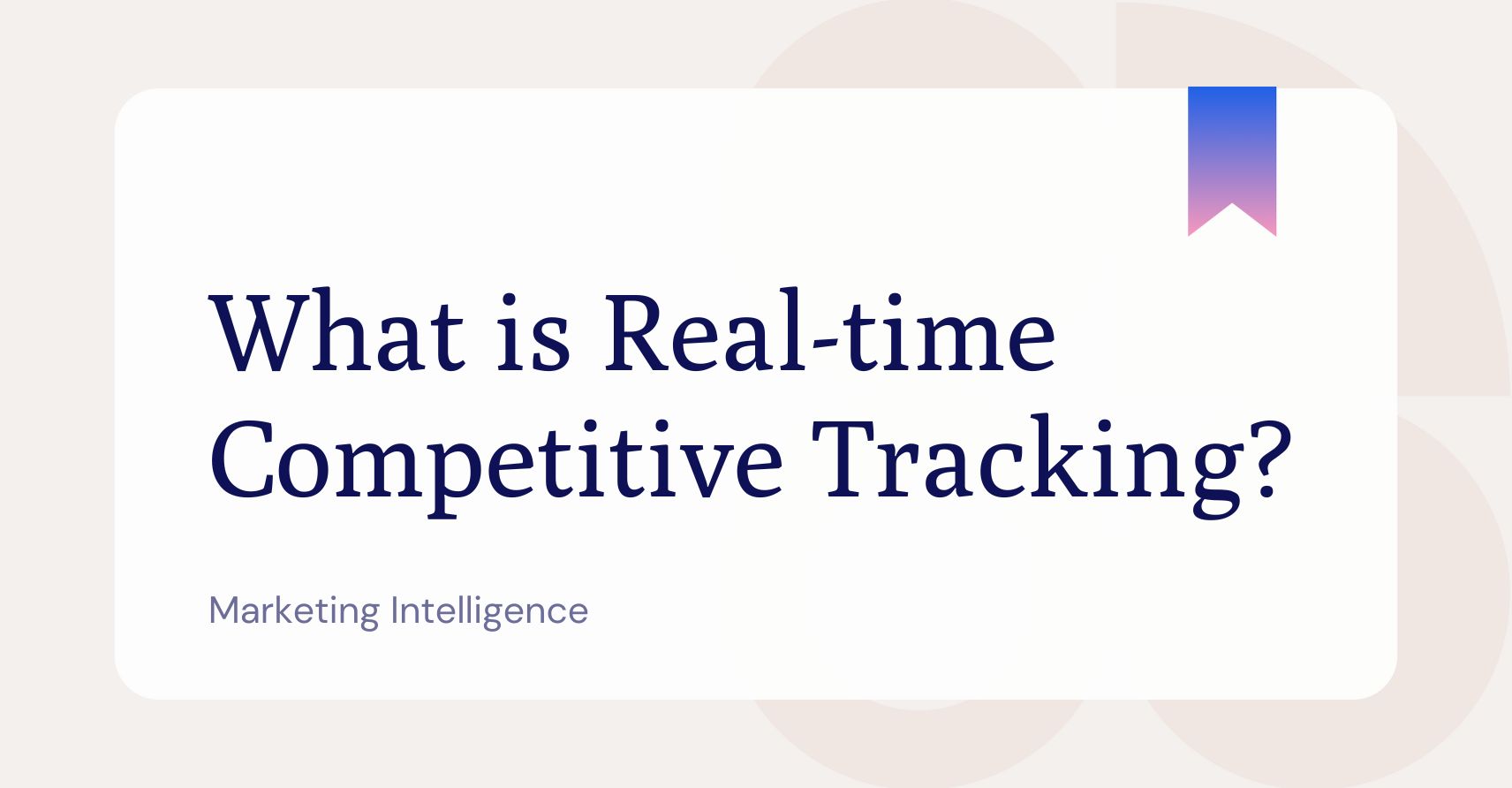Real-time competitive tracking involves monitoring your competitors' actions, marketing campaigns, and market changes as they happen so you can understand and react quickly.
This involves more than just checking in on competitor websites occasionally. Tracking is a continuous, live process that consists of monitoring social media activity, paid advertising, content releases, product launches, pricing changes, and even hiring trends. The goal is to have immediate visibility into moves that could impact your market position, so you can take action before they gain too much traction.
For example, imagine your competitor launches a LinkedIn ad campaign targeting the same audience segment as you. If you spot it instantly, you can adjust your messaging, launch counter campaigns, or run promotions to protect your share of voice.
Why real-time competitive tracking matters
B2B markets change fast. A new trend, pricing shift, or viral campaign can tilt the playing field in days. Without real-time visibility, you may only learn about a competitor's big move when it's already impacting your sales pipeline.
Here's why this capability is so important for marketing and social media managers:
-
Speed wins : Quick detection means you can respond before a competitor's move gains momentum.
-
Better positioning : By staying aware of industry conversations and competitor narratives, you can position your brand more effectively.
-
More brilliant campaigns : Knowing what your competitors are pushing helps you identify white space and develop campaigns that stand out.
-
Reduced risk : Early warnings about new launches or changes help you prepare counter-messaging and protect your market share.
Best practices for real-time competitive tracking
- Identify your top competitors
Create a list of direct competitors, indirect competitors, and emerging players.
-
Direct competitors - offer similar products to the same target audience.
-
Indirect competitors - solve the same problem differently.
-
Emerging competitors - Startups or companies entering your space.
- Set up continuous monitoring
Methods to use
-
Monitor competitor social media accounts for content and engagement trends.
-
Track new ads through platforms like the LinkedIn Ad Library or Google Ads transparency tools.
-
Monitor website changes, including new product pages, case studies, and resources.
-
Set alerts for press releases, industry mentions, or leadership interviews.
-
Follow job postings to detect hiring trends that hint at new capabilities.
- Capture and centralize data
Feed all this information into a single dashboard or reporting tool so your team can quickly review and act.
- Establish alert rules
Not every piece of competitor activity requires action. Define which types of changes are "priority alerts" (for example, a product launch) and which are for general awareness (like a blog post).
- Turn insight into action
Competitive tracking is only valuable if you use the data. Have playbooks ready for different scenarios, such as launching a counter-campaign, refining your messaging, or giving your sales team new talking points.
Examples of real-time competitive tracking in action
Example 1: LinkedIn ad counter
A cloud services company notices that a competitor starts running sponsored posts targeting IT decision-makers. By spotting it within hours, the marketing team launches its own targeted ad set with a special offer, keeping its audience engaged.
Example 2: Rapid pricing response
A SaaS competitor suddenly announces a price drop in a public press release. Real-time tracking flags it immediately, allowing your sales team to address objections before prospects bring it up.
Example 3: Trend hijacking
A competitor begins posting heavily about a new industry regulation. Your team sees the spike early, creates your content with a fresh perspective, and joins the conversation before they own the narrative.
Example 4: Early detection of expansion
Through job posting monitoring, you notice a competitor is hiring several roles in a new region. This prompts a preemptive brand awareness push in that market.
Common mistakes in real-time competitive tracking
-
Tracking too many competitors : Focusing on everyone spreads your attention too thin. Stick to the players who can realistically impact your market share.
-
Treating it as "just social listening": While social listening is part of it, accurate real-time tracking includes ads, product updates, PR, events, and offline signals.
-
Overreacting : Not every blog post or social update needs a counter. Use judgment to avoid wasting resources.
-
Failing to integrate with sales: Your sales team needs timely, competitor-related insights to handle objections and position effectively.
Competitive tracking on LinkedIn
LinkedIn is a goldmine for competitive tracking, especially in B2B markets. Here's what to look for:
-
New posts and content themes are being added to competitor company pages.
-
Sponsored campaigns are visible through LinkedIn's ad transparency tools.
-
Thought leadership posts from executives that hint at new positioning.
-
Engagement spikes that show which topics are resonating with their audience.
-
Changes in headcount or hiring patterns can be tracked through employee profiles.
Example:
A marketing manager notices that a competitor's post highlighting a customer success story is generating substantial engagement. Rather than waiting, they fast-track their customer case study to ride the same wave of interest.
Getting started with real-time competitive tracking
-
List competitors : Include direct, indirect, and potential entrants.
-
Select tracking tools, including social monitoring, ad tracking, and news alert tools.
-
Create alert thresholds :Define what events trigger a fast response.
-
Build an action plan :Decide who responds and how when key alerts happen.
-
Review performance : Adjust tracking scope and methods based on what delivers valuable insights.
Key takeaways
-
Real-time competitive tracking is about staying alert to market changes as they happen.
-
It gives you an early-warning system for competitive threats and opportunities.
-
The value lies in both the speed of detection and the ability to act on the insight.
-
For marketing and social media managers, it is an essential part of staying relevant in fast-moving markets.
